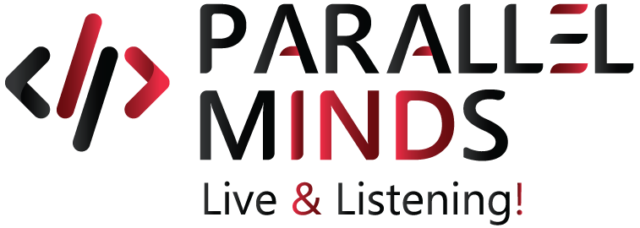Overcoming Objections to Low-Code Development
You’d think all these advantages would be enough to make a low-code development environment a developer’s first choice. Surprisingly, there are quite a few hurdles to jump before a developer begins to trust a low-code environment.
We term it the Developer Reluctance Syndrome – the idiosyncratic tendency of developers to raise apprehensions and concerns regarding low-code development!
Considering how we are an integral part of the domain, we have an insider view of these doubts and our experience enables us to gauge the reasons behind them.
Fortunately, we have the solutions too!
Here’s a systematic breakup of the top five developer apprehensions, the reasons behind these concerns, and the solutions to address them.
Apprehension #1
Performance & Scalability: Navigating new low-code territory without firsthand experience with its performance and abilities.
Reason: It is a myth low-code platforms have been going up against since their early days, the myth that LCDPs may not be as efficient as their hand-coded counterparts. Add to this the concern that abstract bits of low-coding environments may throw a spanner into plans for any optimization that may be required for high-performance applications in a large-scale environment.
Solution: The abilities of low-code platforms to deliver and sustain solutions in large-scale applications have been proven across domains and industries. Case studies of highly successful deployments, along with a peek into their capabilities to strategize proactive performance optimization, offer solid proof. Developers must also be introduced to platforms with cloud platform integration and automated scaling to understand the wide range of solutions an LCDP can provide.
Apprehension #2
Loss of Control & Flexibility: The lack of complete control over the coding environment proves to be a nightmare scenario for developers.
Reason: Spending long hours controlling and customizing every development aspect of an application is how the community has been exploring its skills until the low-code revolution. This loss of fine-grained control is, understandably, a nightmare. Extreme precision and explicit control are the fundamental requirements of traditional coding. Developers find the abstract nature of some aspects of low-code development a departure from the norm. The more experienced a developer, the more pronounced the apprehension towards this lack of customization and control.
Solution: It is important to showcase the abilities of LCDPs to strike a balance between visual development and the easy integration of custom code for unique departures and complex logic requirements. Explaining the identification of case-specific nuances depending on need and differentiating between different use cases is essential. It’s all about comprehending the right use cases for a low-code approach and mixing precision-driven traditional coding manoeuvres into this environment. At the end of the day, it’s more a this+that scenario rather than an either/or situation.
Apprehension #3
Longevity & Lock-ins: Worries over the long-term capabilities and vendor lock-in potential of applications driven by LCDPs.
Reason: Developers are well aware of the time and effort that goes into developing an application, which is why they plan for the long-term and also build into their solutions the ability to take on multiple vendors. In the case of LCDPs, there’s a nagging concern about the longevity factor and whether the platform would sustain in the long term or fade away for lack of support. There’s also the concern of being too dependent on a particular vendor and in turn, losing flexibility and instead, risking high dependency.
Solution: It is important to showcase how reputable vendors are also opting for LCDPs and have large and proven communities adopting this shift. Revealing milestones in updates and support helps too. There should also be an emphasis on displaying the migration flexibility that LCDPs offer so that data migration and open standards remain a priority.
Apprehension #4
Integration & Complexity: A knowledge gap in how the integration abilities of an LCDP will play out with complex external APIs or legacy systems.
Reason: In a real-world environment, LCDPs must develop applications to handle complex integrations and support processes with heavy and unique data flows. These applications must also merge seamlessly with existing systems and processes while connecting to available data sources. And all this must be accomplished efficiently and without glitches. Without understanding the capabilities of modern LCDPs, it is difficult for experienced yet traditional developers to trust a low-code environment.
Solution: The abilities of LCDPs are well known to those who have explored the immense potential of these platforms. When traditional developers are introduced to the long list that includes deploying connectors to bridge common systems and solid APIs, integration of customized coding solutions in complex environments, and deploying middleware expertise to further stretch its abilities, they will find it easier to understand how LCDPs are a solution worth onboarding.
Apprehension #5
Keeping Pace with Change: Among the most serious concerns, this one addresses the doubt of whether traditional coding skills will depreciate at an alarming pace due to the adoption of LCDPs.
Reason: Hand-coding is a skill that is developed after years of constant learning and invested practice. Experienced traditional coders are in demand because they are proficient at what they do, making them more marketable. So LCDPs are viewed as the monster that is here to eat into the market share traditional developers have so painstakingly built over the years. The fear of becoming obsolete and their skills becoming irrelevant is real.
Solution: It is important to see LCDPs and similar disruptive solutions for what they are – tools to augment your skills, not negate them. When developers understand how low-code platforms take on mundane coding tasks and find quick coding solutions for repetitive processes, they will understand how they now have more time and energy on their hands to divert their attention to more complex and challenging parts of the development process. LCDPs are here to assist, not take over.
Explore the Real Value of LCDPs with Parallel Minds
At Parallel Minds, we understand how difficult it is to adapt to a shift in technology and mindset. There’s the doubt of whether a solution that hasn’t been developed by the developers themselves is indeed worth trusting in terms of deliverability and scaling.
There’s the inexperience with LCDPs, which means most developers do not even know how they work to help the developer community. And finally, there’s the apprehension of LCDPs completely taking over the development domain and eliminating the need for developers.
The only solution to all these problems and the cure to the Developer Reluctance Syndrome is to introduce the development team to all the things that LCDPs can do, and how these low-code solutions can help them create and deploy applications with less exhaustion and increased dependability and scalability.
Developers must understand that with low-code solutions on their side, they can now steer their minds to solve more complex problems and innovate more efficient solution designs.
Share:
More Posts

Value Stream Mapping – Current and Future States
If you’ve ever witnessed a brilliant idea with the potential to develop into a successful

The Digital Evolution of a Lean Manufacturing Ecosystem: The Turnaround from Waste to Profit
As leaders in the tech space, we owe it to our respective industries to revolutionize







